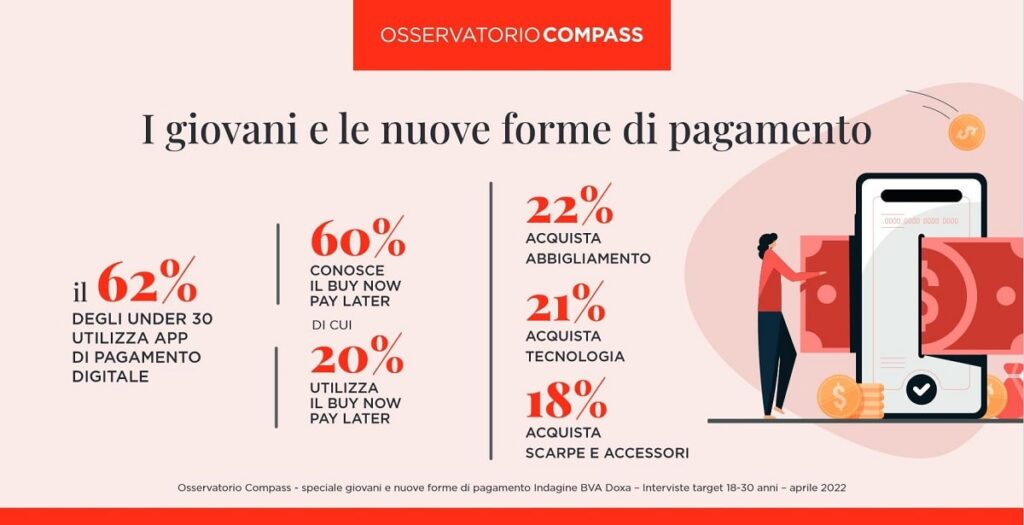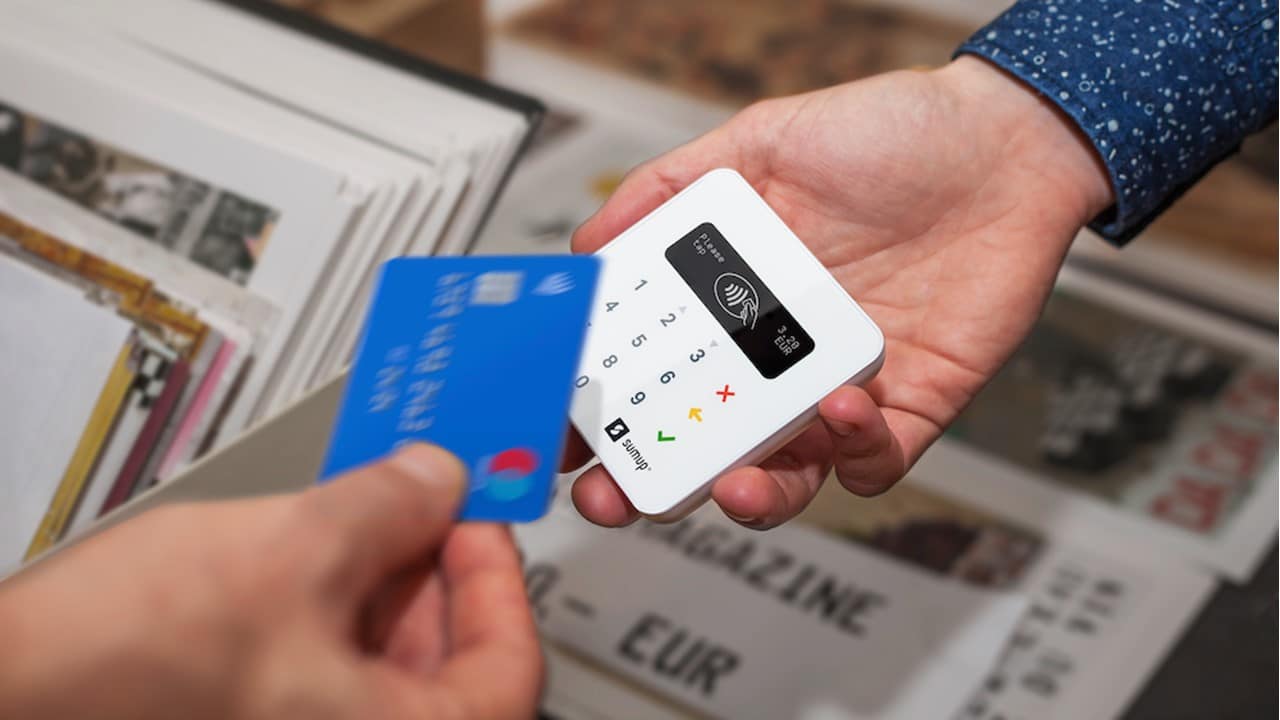Compass presents a Observatory on young people under 30 and the world of payments, which are becoming more and more digital. In fact, kids use more and more app, carte e wallet to pay in safety and convenience. They also know the world of PNBL (Pay Now Buy Later)which represents the future of the shopping world.
Compass Observatory on payments for young people under 30
Compared to just a few years ago, the use of cash is dropping dramatically. By analyzing the 18-38 range, Compass was able to see how 85% have a debit card (90% if we extend the age range), with 77% having a prepaid and 58% having a credit card.
But the greatest increase is experienced by them payment app. Everyone knows them (96%) e two thirds (62%) use them. Also systems are coming mobile payment, wallets (such as those of Apple, Google or Huawei) to pay with the smartphone: 93% know them and the 37% of respondents use them.

Debit / ATM cards are the most popular payment methods for physical stores (56%), followed at a distance by cash (29%), especially for microtransactions. Prepaid (25%), payment apps (19%) and mobile payment (16%) follow. Online still triumphs ATM (42%), followed by apps (38%) and prepaid cards (34%).
Pay Now Buy Later
Il 60% also know the world of Buy Now Pay Later, which allows you to make purchases (especially online) and defer payment in three or more installments. 20% use them and the 46% will consider this possibility for future purchases. Especially for clothing (22%), technological goods (21%) and accessories (18%).
Luigi Pace, Compass Central Marketing & Innovation Director he comments: “Safe, practical, comfortable tools, without risks or surprises: this is what young people want from a payment system. In this sense, the success of payment cards among the under 30s should be read. Now, with apps, wallets and mobile payments, all solutions particularly suited to the wishes and needs of young people, the path of digitalization of payments is marked. The Buy Now Pay Later, which still has a lot of potential for growth in Italy, fits into this context by adding a further piece: the possibility of dividing the purchase cost of a product into several monthly amounts and above all of doing it in a simple and convenient way. at no additional cost for the customer, both online and in physical stores. “















Leave a Reply
View Comments